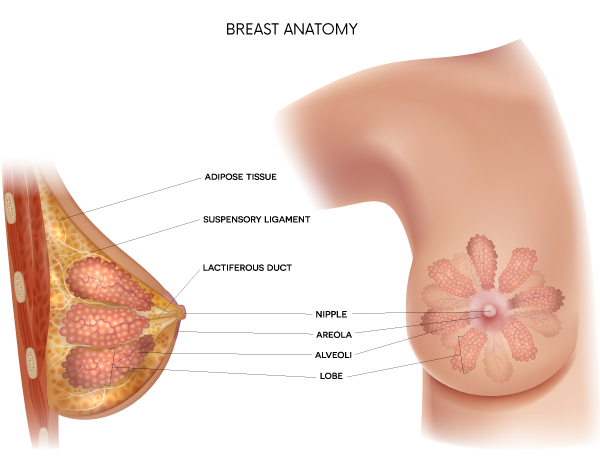Breast milk – this is how it works
Early in pregnancy, the body prepares for breastfeeding. Breasts change, blood flow increases, and milk ducts develop. Here’s how breast milk is made, what colostrum is, and how breastfeeding adapts to the baby’s needs.
Read time: 2 m
Verified by Ingela Ågren
Certified Midwife
How breast milk is made
The breast contains small sacs called alveoli where milk-producing cells reside. Milk moves through ducts to the nipple. Breast size doesn’t determine milk supply – small and large breasts can produce the same amount.

Colostrum – baby’s first food
By the third month of pregnancy, colostrum is produced. It’s rich in nutrients, proteins, minerals, vitamins, and antibodies, supporting the baby’s immune system during the first days. Gradually, colostrum becomes mature milk with more fat and lactose, ideal for growth.
Regulating milk production
Prolactin is released when the baby nurses. The more the baby feeds, the more milk is produced. The body responds to demand – a natural supply-and-demand system.
Let-down reflex – milk release
Oxytocin pushes milk from the alveoli through the ducts. This let-down reflex may feel like tingling or pressure. Some feel it strongly, others barely notice it. Stress, worry, or pain can affect the reflex – calm surroundings, skin-to-skin, warmth, and gentle massage can help.
Practical breastfeeding tips
- Stay in a calm environment, ideally skin-to-skin.
- Drink plenty of water and rest – your energy matters.
- Your partner can help by keeping things calm and supporting practically.
- Contact a midwife or lactation consultant if you experience difficulties.
Read also: Breastfeeding in the first days – getting started
Verified by Ingela Ågren
Certified Midwife
More from Preggers
Hundreds of related articles, podcasts & more waiting for you in the Preggers app.
Download Preggers today.

